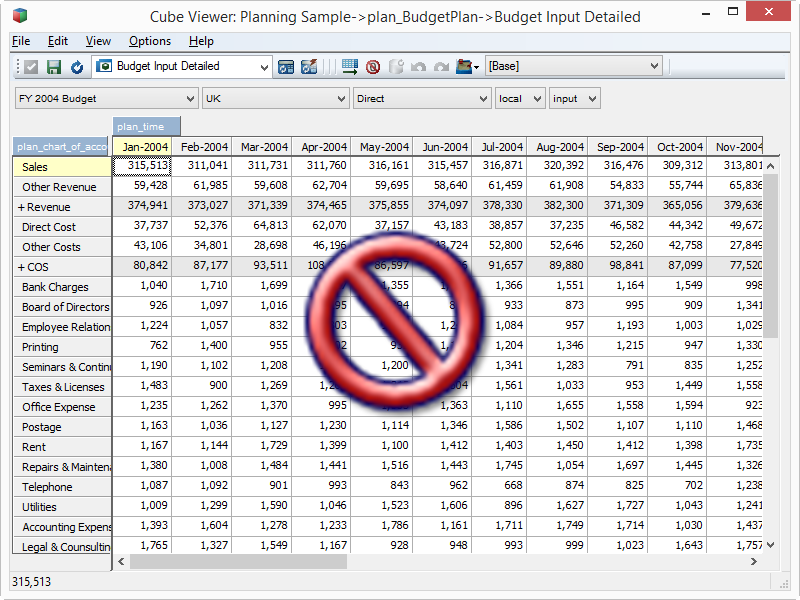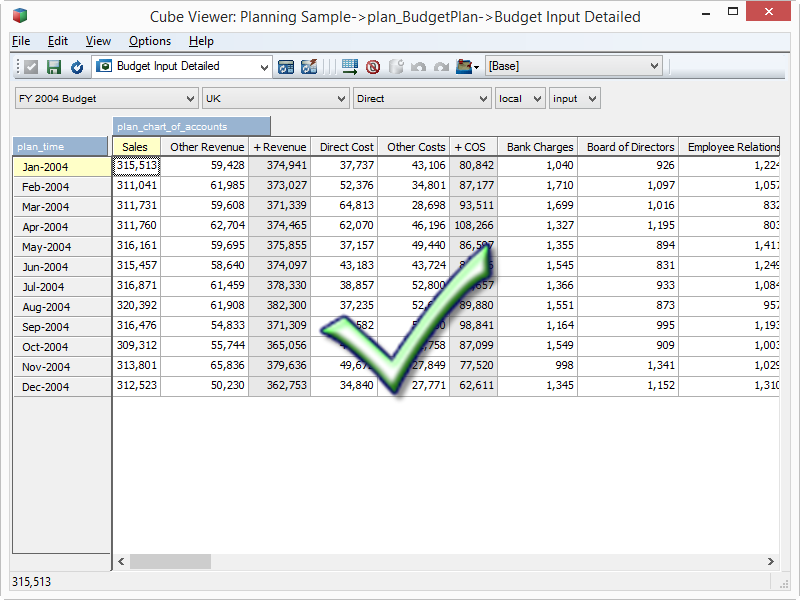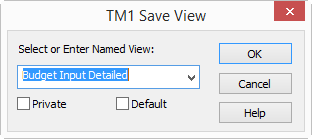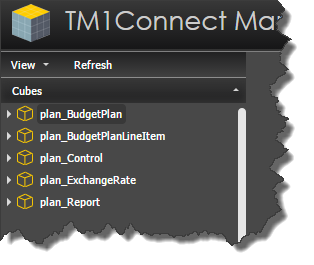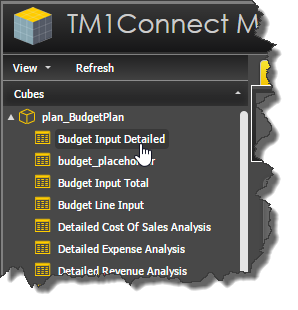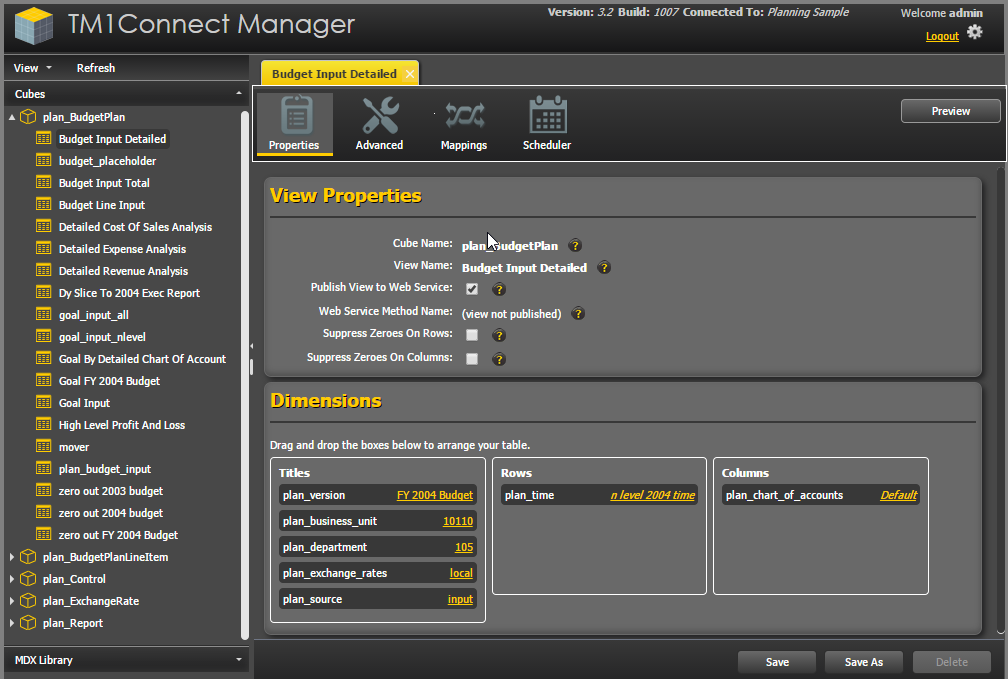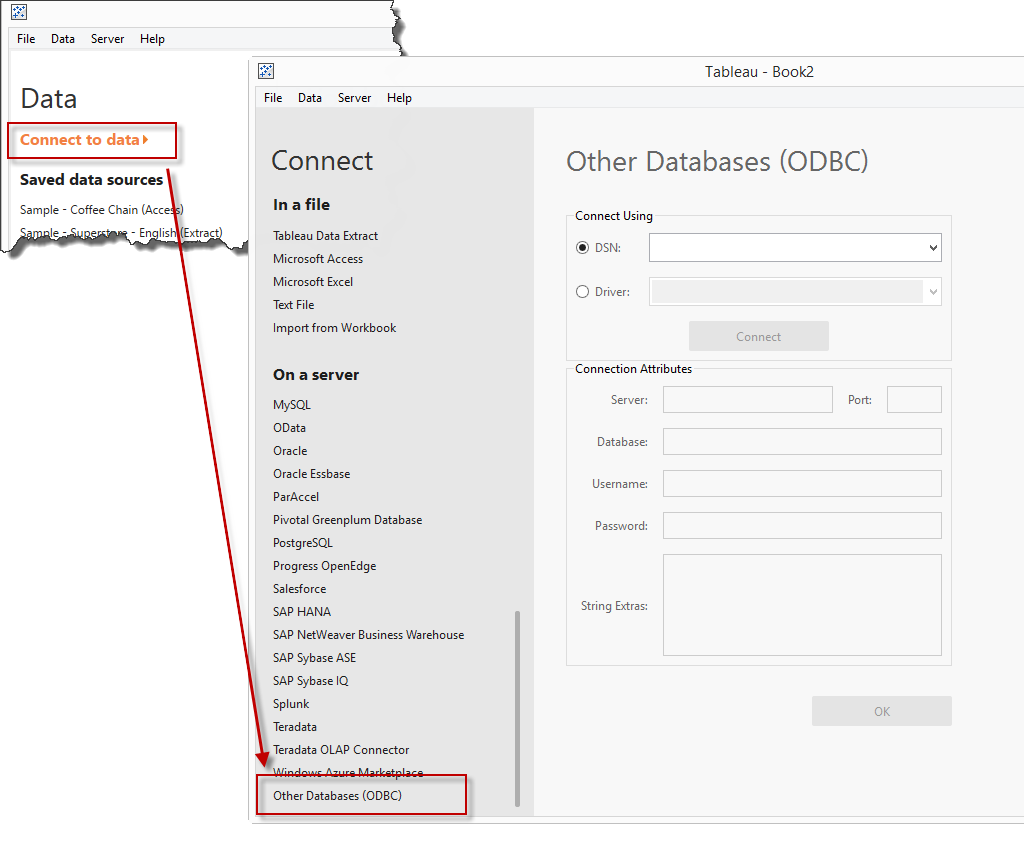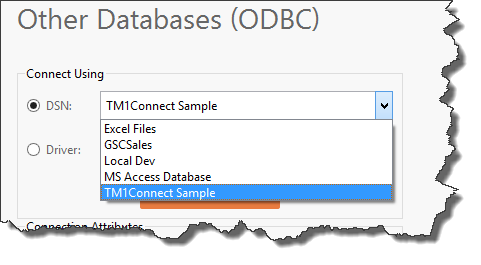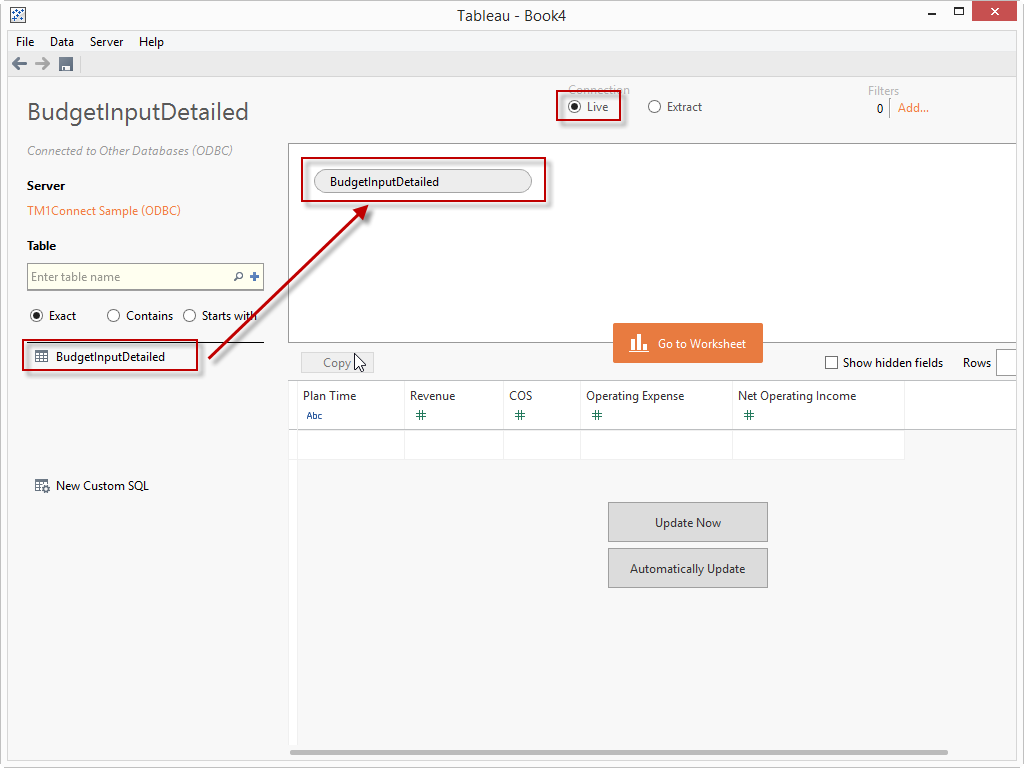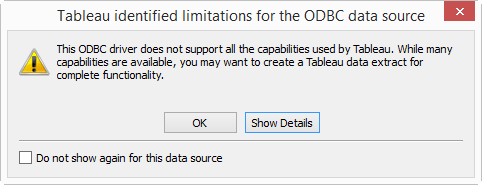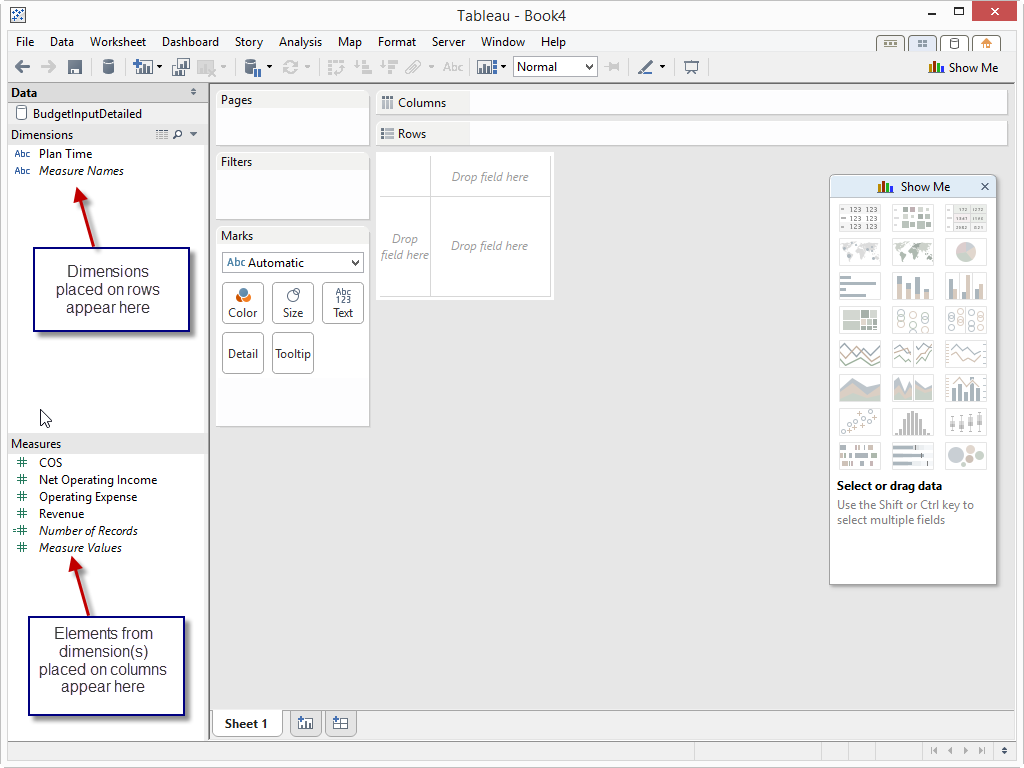This Quick Start Guide gives you the basic steps you need to know to begin creating exports for Tableau in on-demand mode. On-Demand mode is used when users are to be allowed direct access to TM1 under the following conditions:
❑Real-time access to data is needed
❑Data volumes are low
❑TM1 is the provider of data security (optional)
Basic Publishing Steps
Use Cube Viewer in TM1 to create a view that closely resembles the bulk of information that is to be displayed on the form or report. Get this view to look as close to the final format that you want to display and save it as a public view. Unlike TM1, Tableau prefers information in a relational format where the data values correspond with the column headings (measures), rather than on the rows. The following view has the accounts on the rows and the months on the columns. Although this may appear to be a typical view in TM1 and Tableau is able to import this data file easily, it will however, turn out to be difficult to work with in Tableau when attempting to obtain a quarterly total for the Revenue account.
|
Using Internet Explorer, Chrome, Firefox (or other web browser), go to the URL of TM1Connect (typically http://servername/TM1Connect).
Expand the desired cube and locate the saved view created in the previous step.
|
The next step is to publish the view to the TM1Connect web service. This is the name that the users will use when connecting from the TM1Connect Plug-In for Tableau. Check the box labeled Publish View to Web Service and save the view.
|
![]() Select the TM1Connect ODBC Driver in Tableau
Select the TM1Connect ODBC Driver in Tableau
In to access TM1Connect from Tableau, select the Other Databases (ODBC) data source from the data connection list.
Once you have selected Other Database, you can either choose a pre-configured DSN or select Driver and choose the TM1Connect ODBC Driver from the drop down. For this example, we will assume that a DSN has been pre-configured.
After selecting the appropriate DSN, choose Connect and then OK to return to the workspace. |
![]() Select the view to import into Tableau
Select the view to import into Tableau
Once you have made a successful connection to TM1Connect server, you will be able to select from the list of tables, for any views which have been published and drag them into the workspace. To retain live connectivity, leave the Live option set, and then return to the worksheet.
You may be presented with a warning dialog (as seen below). This is normal and can be ignored. Just click Ok to continue.
|
With the connection and the query configured, you will now see any dimensions that have been placed in the rows as dimensions in Tableau, and the measures will correspond to the elements from the dimension(s) which were placed on the columns. At this point, you can create your Tableau worksheet as you would with any other data source.
|
